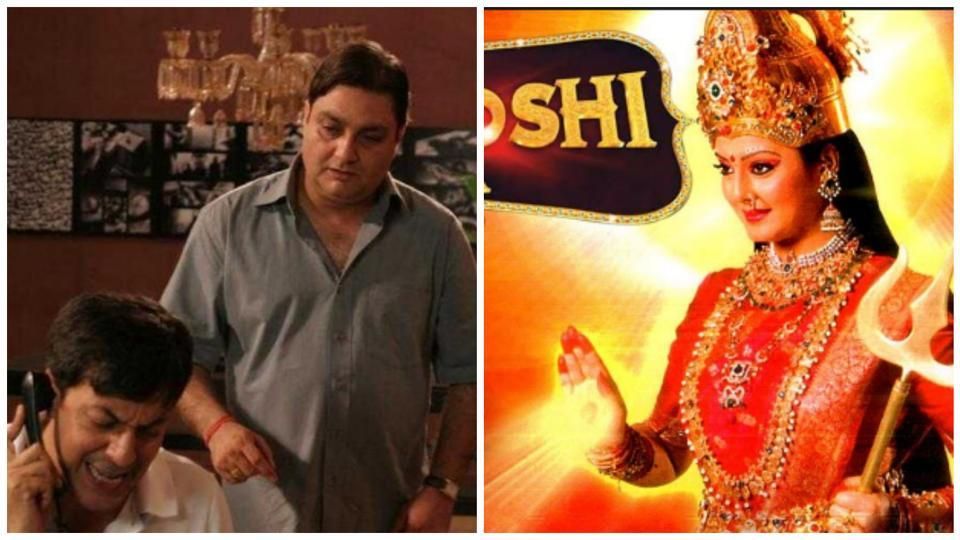Golmaal, Satya, Vicky Donor: 10 Bollywood Films That Nobody Expected To Be Hits!

Small is not only beautiful, it can also be a money-spinner. Don’t believe us? Take a look at these 12 small-budget films that belied established norms to script success without money or star power. None of them boasted any big names, had zero expectations (at least for the audience) but emerged out of nowhere to connect with us. Take Vinay Pathak and Rajat Kapoor’s Bheja Fry for instance. This 95-minute film, which marked its 10th anniversary on 13 April, didn’t have any takers when it first hit the screens.
Here’s a list of films which have earned a cult status for themselves over the years since their release.
Jai Santoshi Maa (1975):Sholay wasn’t the only film that did well in the year of political turmoil and emergency. Director Vijay Sharma’s small film released in May captured the imagination of rural viewers in coming months. Small cinema hall owners even started to keep a donation box outside theatres to rake in more money. It was the second highest grossing film of the year.
Gol Maal (1979):Hrishikesh Mukherjee always believed in the organic reach of a film, and kept making his type of cinema even when the budget and star-power were rising. Interestingly, he managed to get hold of bigger actors like Amitabh Bachchan and Dharmendra, but this one was different. It was a funny double-role story featuring the ultimate common man of Bollywood, Amol Palekar. It released in the summers of 1979 and became a talking point among the college-going youth. It’s still among the most viewed films on TV.
Jaane Bhi Do Yaaro (1983): Today, this Kundan Shah film might enjoy a rating of 8.5 on IMDB. Its success took many by surprise. Shah, an FTII graduate, collaborated with other fellow graduates of the institutes to make the satire on corruption. Actors like Om Puri, Naseruddin Shah, Pankaj Kapur and Ravi Baswani made it a film that can crack you up every time you watch it.
Saaransh (1984): Sanjeev Kumar almost replaced Anupam Kher as the lead in Mahesh Bhatt’s film, who was still basking in the success of his 1982 film Arth. Eventually, Kher kept his role and delivered the performance of a lifetime. He was only 29 when he played a 60-year-old man in this defining ‘middle of the road’ film.
Satya (1998): Much has been said and written about Ram Gopal Varma’s path breaking gangster film, but it the result of sheer team work that introduced Bollywood to outstanding professionals like Saurabh Shukla, Anurag Kashyap, Manoj Bajpayee, Aditya Srivastava and Apurva Asrani among others. It simmered for a long time before completing a 100-day run in Mumbai alone. It was a great feat to achieve in a year that also saw the releases of films like Kuch Kuch Hota Hai, Pyaar Kiya Toh Darna Kya, Ghulam and Pyaar Toh Hona Hi Tha.
Iqbal (2005): After Subhash Ghai’s ambitious project Kisna-starring Vivek Oberoi flopped, his company Mukta Searchlight Films began to focus on small budget, meaningful ventures. Nagesh Kukunoor’s Iqbal, a deaf and mute boy’s journey to the national cricket team, seemed like the perfect film for Ghai’s company. Shreya Talpade’s exceptional acting and tight screenplay ensured it became one of the finest underdog stories ever shot in Hindi.
Khosla Ka Ghosla (2006): Film buffs cared to read up Vinay Pathak and Ranvir Shorey’s names only after this Dibakar Banerjee film. Absolutely original and fresh in approach, it turned out to be one of those films that shifted the film industry’s focus to Delhi from Mumbai. A typical Punjabi middle class guy gets duped and his children seek revenge from the builder, but without being violent in the movie that was made at a budget of Rs 3.75 crore. Its finally tally touched Rs 37 crore, excluding the DVD sales.
Bheja Fry (2007): Director Sagar Ballary’s idea of presenting a modern day ‘Idiot’ didn’t find many takers in the beginning. Somehow, Ballary and his gang of stellar actors (Rajat Kapoor, Vinay Pathak, Ranvir Shorey, Milind Soman) managed to release their 95-minute film in limited screens. Critics were mostly positive in their response, and that helped it in picking up the pace. First few days registered a cash inflow of Rs 7.5 crore, but it eventually ended up with a kitty of more than Rs 18 crore. Its TV success is a different story altogether.
A Wednesday (2008): This is where Neeraj Pandey, one of the Bollywood’s most sought after filmmakers, started his journey with two capable veterans (Naseeruddin Shah and Anupam Kher), but small box office draws. Its tone and relevancy captured the audience’s imagination after first week. Terrorist activities were on a rise, especially in the aftermath of 2006 Mumbai attacks, when A Wednesday released. It went on to become a commercial success.
Vicky Donor (2012): It was a year of remarkable importance for Bollywood. From Kahaani to Gangs Of Wasseypur to Barfi, filmmakers were breaking rules, but nobody could even think of sperm donation as the theme of a mainstream film. Director Shoojit Sircar and producer John Abraham placed their bets on newcomers Ayushmann Khurrana and Yami Gautam. Annu Kapoor was the only known face in the film. Made at a shoestring budget of Rs 5 crore, it opened to average numbers despite hit songs. But that was just a beginning. It gave more than 700% return on investment, and was among the year’s top-grossing films.





